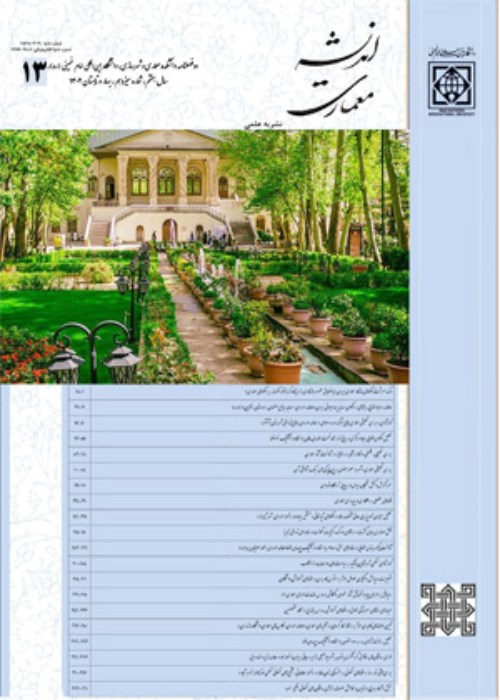The Role of Creative Thinking and Learning Styles in the Education of Architectural Design
Author(s):
Article Type:
Research/Original Article (دارای رتبه معتبر)
Abstract:
Researching in the area of designing process as the core of architectural education has attracted researchers and instructors attention in recent decades. Almost, in all of the architectural design educational methods students have been considered similar, therefore educational steps present and follow as the same. In fact, personal characteristics of the students who are studying architectural design have been categorized based on their individual differences, exactly in the same way that human characteristics have been categorized. In other words, these students are different in their abilities, knowledge, insights, and transferring them into designing activities. Assuming that join training programs ignore both the development of students’ skills and their creativity improvement, this article is going to prove that architectural design education depends on the learner and his/her individual characteristics and the teacher would not be able to choose a proper method for educating without considering and understanding these criteria. There are different components in the assessment of the individual differences of learners, among them learning styles have been selected as an indicator of individual differences to be investigated in this paper, due to its importance and impact on the architectural education. In addition, creative thinking factor as an indicator which is associated with the learning style will be examined regarding its effect on reaching success in the complex design process which is the subject of the education and learning procedure in this article. Different learning styles for the designing students can be categorized into Convergence, Divergence, Assimilator and Adaptive that each of which is a combination of different skill levels of learning styles. After studying architectural education and educational psychology fields, standard tests (Torrance Creativity Test, Torrance Creative Thinking Test and Kolb’s Learning Style Questionnaire) conducted in order to study and analyze the students' cognitive differences. Target society surveyed through random cluster sampling among students who have attended to the Architectural Design 2 course, in the Islamic Azad University. The aforementioned course has been chosen because at this level the designer's personality has not been formed completely and his/her responses have not been influenced by the possible ways that teachers use in the design courses and they just have learned some basics of designing in the Architectural Design 1 course. The research continued based on three hypotheses: 1- architectural students’ learning styles are different. 2- architectural students' creativity level differs according to their learning styles. 3- The creative thinking of architectural students varies according to their learning styles. Research hypothesis test was carried out through Chi-square test and one-way variance analysis in SPSS software and proved research hypothesis. The results show that each student has a unique level of creativity and a certain style of learning and student’s creativity and creative thinking level vary according to the students' learning styles. It is important to know and understand every student weakness in each section of creativity (Fluency, Flexibility, Originality, and Elaboration) as well as the skills of learning styles (Concrete Experience, Abstract Conceptualization, Active Experimentation and Reflective Observation), to define individual solutions in order to reinforce components proportionate to their inefficiency in each section. Hence, guiding students in the Design courses requires recognizing individual differences and providing different educational approaches which depend on the expertise and knowledge of instructor in the field of architectural education. Consequently, with respect to the existence of individual differences the Architectural Design instructor should deal with the students one by one depends on their specific characteristics.
Keywords:
Language:
Persian
Published:
Architectural Thought, Volume:3 Issue: 5, 2019
Pages:
125 to 140
magiran.com/p2052511
دانلود و مطالعه متن این مقاله با یکی از روشهای زیر امکان پذیر است:
اشتراک شخصی
با عضویت و پرداخت آنلاین حق اشتراک یکساله به مبلغ 1,390,000ريال میتوانید 70 عنوان مطلب دانلود کنید!
اشتراک سازمانی
به کتابخانه دانشگاه یا محل کار خود پیشنهاد کنید تا اشتراک سازمانی این پایگاه را برای دسترسی نامحدود همه کاربران به متن مطالب تهیه نمایند!
توجه!
- حق عضویت دریافتی صرف حمایت از نشریات عضو و نگهداری، تکمیل و توسعه مگیران میشود.
- پرداخت حق اشتراک و دانلود مقالات اجازه بازنشر آن در سایر رسانههای چاپی و دیجیتال را به کاربر نمیدهد.
In order to view content subscription is required
Personal subscription
Subscribe magiran.com for 70 € euros via PayPal and download 70 articles during a year.
Organization subscription
Please contact us to subscribe your university or library for unlimited access!


